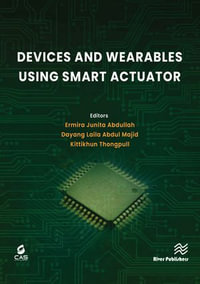
eTEXT
Optimal and Robust Estimation
With an Introduction to Stochastic Control Theory, Second Edition
By: Frank L. Lewis, Lihua Xie, Dan Popa
eText | 19 December 2017 | Edition Number 2
At a Glance
eText
$322.30
or
Instant online reading in your Booktopia eTextbook Library *
Read online on
Desktop
Tablet
Mobile
Not downloadable to your eReader or an app
Why choose an eTextbook?
Instant Access *
Purchase and read your book immediately
Read Aloud
Listen and follow along as Bookshelf reads to you
Study Tools
Built-in study tools like highlights and more
* eTextbooks are not downloadable to your eReader or an app and can be accessed via web browsers only. You must be connected to the internet and have no technical issues with your device or browser that could prevent the eTextbook from operating.
ISBN: 9781351837545
ISBN-10: 1351837540
Series: Automation and Control Engineering
Published: 19th December 2017
Format: ePUB
Language: English
Publisher: Taylor & Francis
Edition Number: 2
You Can Find This eBook In
Non-FictionEngineering & TechnologyMechanical Engineering & MaterialsMechanical EngineeringElectronics & Communications EngineeringCommunications Engineering & TelecommunicationsTelephone TechnologyMobile Phone TechnologyEnvironmental ScienceEnergy Technology & EngineeringElectrical EngineeringPower Generation & Distribution
This product is categorised by
- Non-FictionEngineering & TechnologyMechanical Engineering & MaterialsMechanical Engineering
- Non-FictionEngineering & TechnologyElectronics & Communications EngineeringCommunications Engineering & TelecommunicationsTelephone TechnologyMobile Phone Technology
- Non-FictionEngineering & TechnologyEnvironmental Science
- Non-FictionEngineering & TechnologyEnergy Technology & EngineeringElectrical EngineeringPower Generation & Distribution
- Non-FictionEngineering & TechnologyEnergy Technology & EngineeringElectrical Engineering























